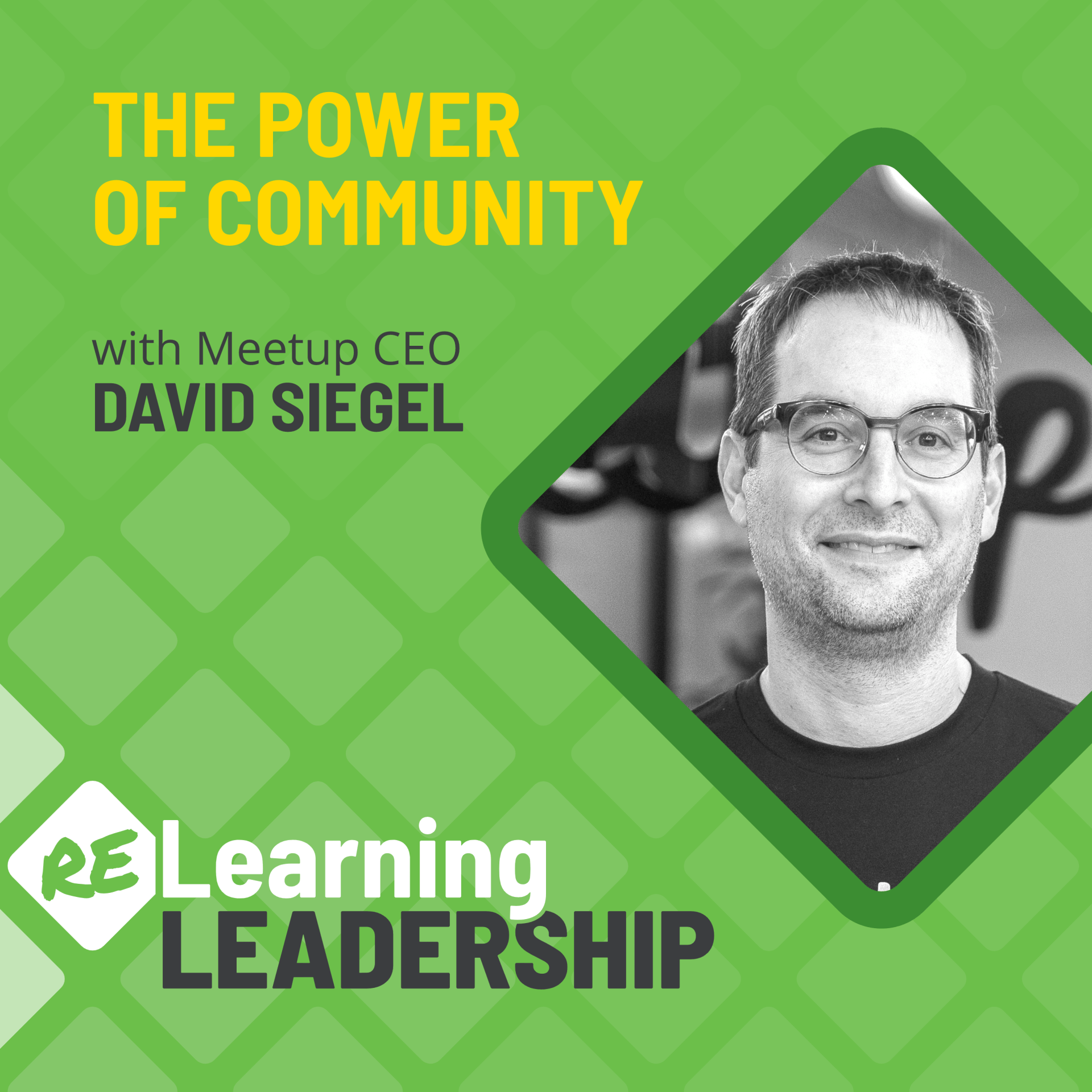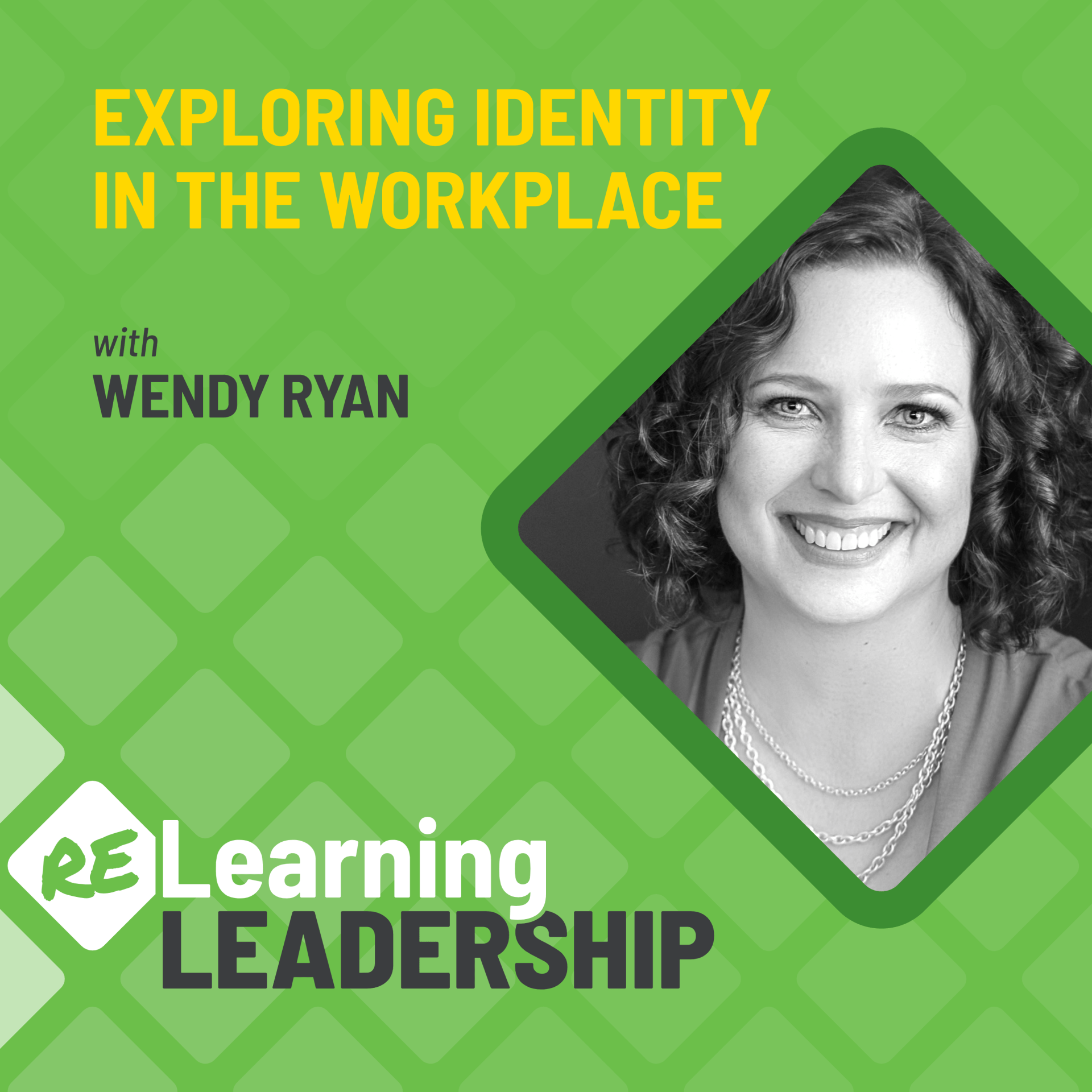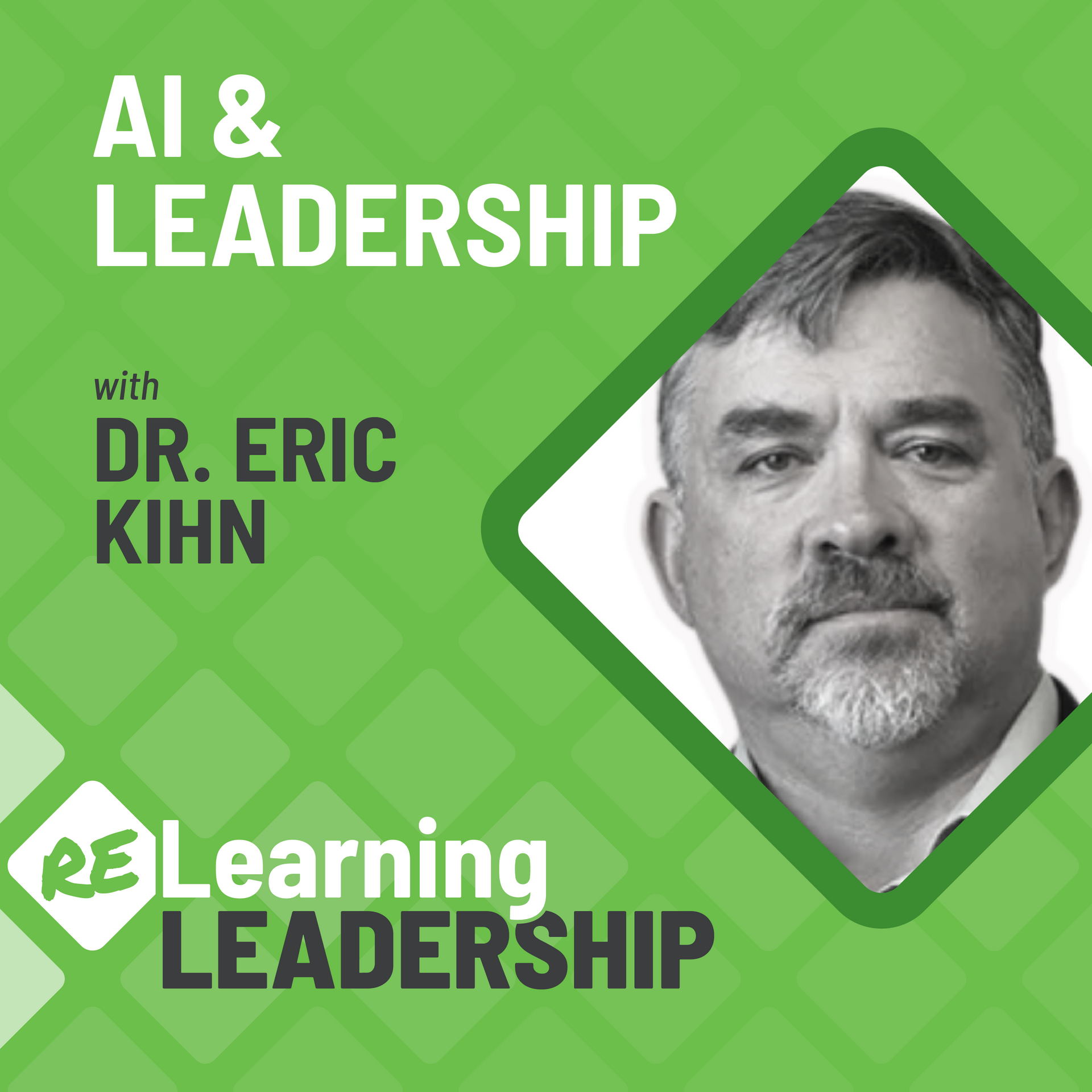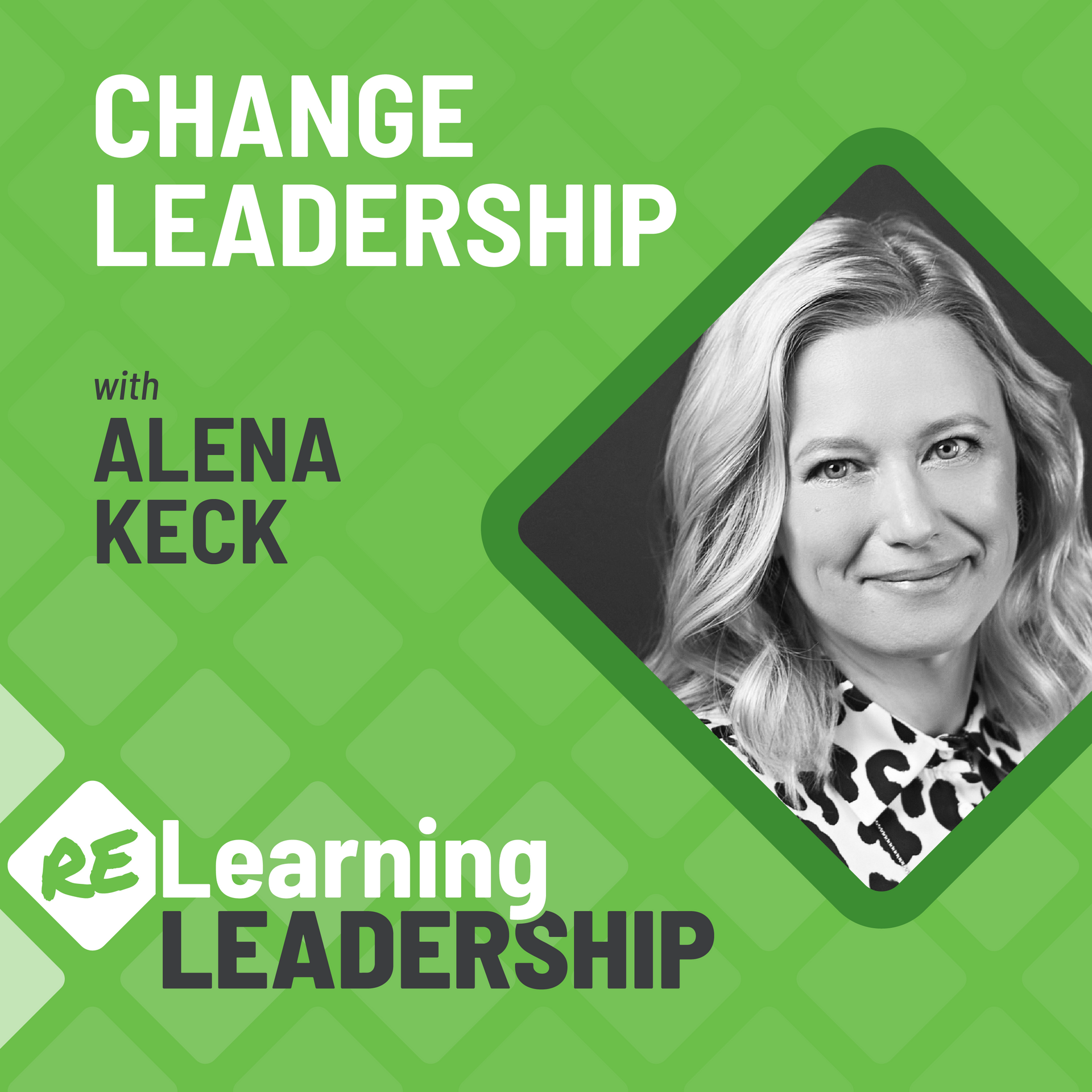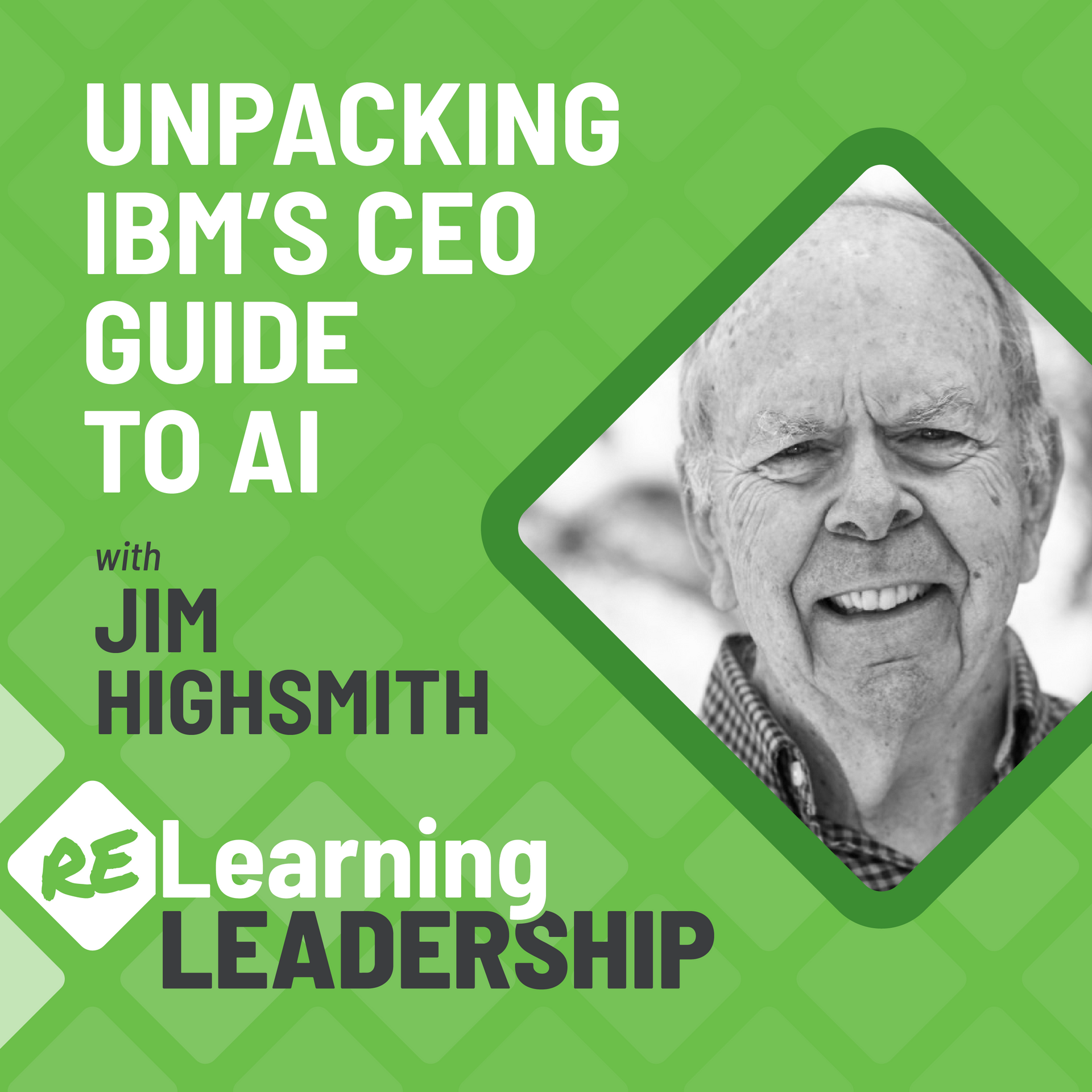55: Invest in Yourself
How are you investing in your personal and professional growth?
Discover the power of self-investment in leadership on the latest episode of the Relearning Leadership podcast. Host Pete Behrens delves into the journeys of Kasey Rivas, Associate Director of Strategic Partnerships at March of Dimes, and Sonny Mendoza, IT Transformation Manager at Open Dealer Exchange.
Kasey and Sonny reveal the profound personal and professional growth they achieved through a comprehensive nine-month leadership program. Listeners will hear how embracing vulnerability, fostering a growth mindset, and investing in oneself can lead to remarkable leadership evolution.
Kasey Rivas, Associate Director of Strategic Partnerships, March of Dimes
Kasey has over 15 years of experience in program and grant management. She currently serves as Associate Director of Strategic Partnerships for the March of Dimes where she co-leads efforts to engage cross-sector partners and build a national movement to achieve maternal and infant health equity. Her passion is in helping underserved and under-resourced communities improve health outcomes by addressing all aspects of what creates a healthy and thriving life.
Kasey earned her Master of Public Health from George Washington University specializing in Maternal and Child Health Programs and Health Communication. Kasey is also trained in Results Based Facilitation, Human Centered Design, Results Based Accountability, and Agile leadership methods. Kasey lives in San Diego, with her husband, son, and their two dogs.
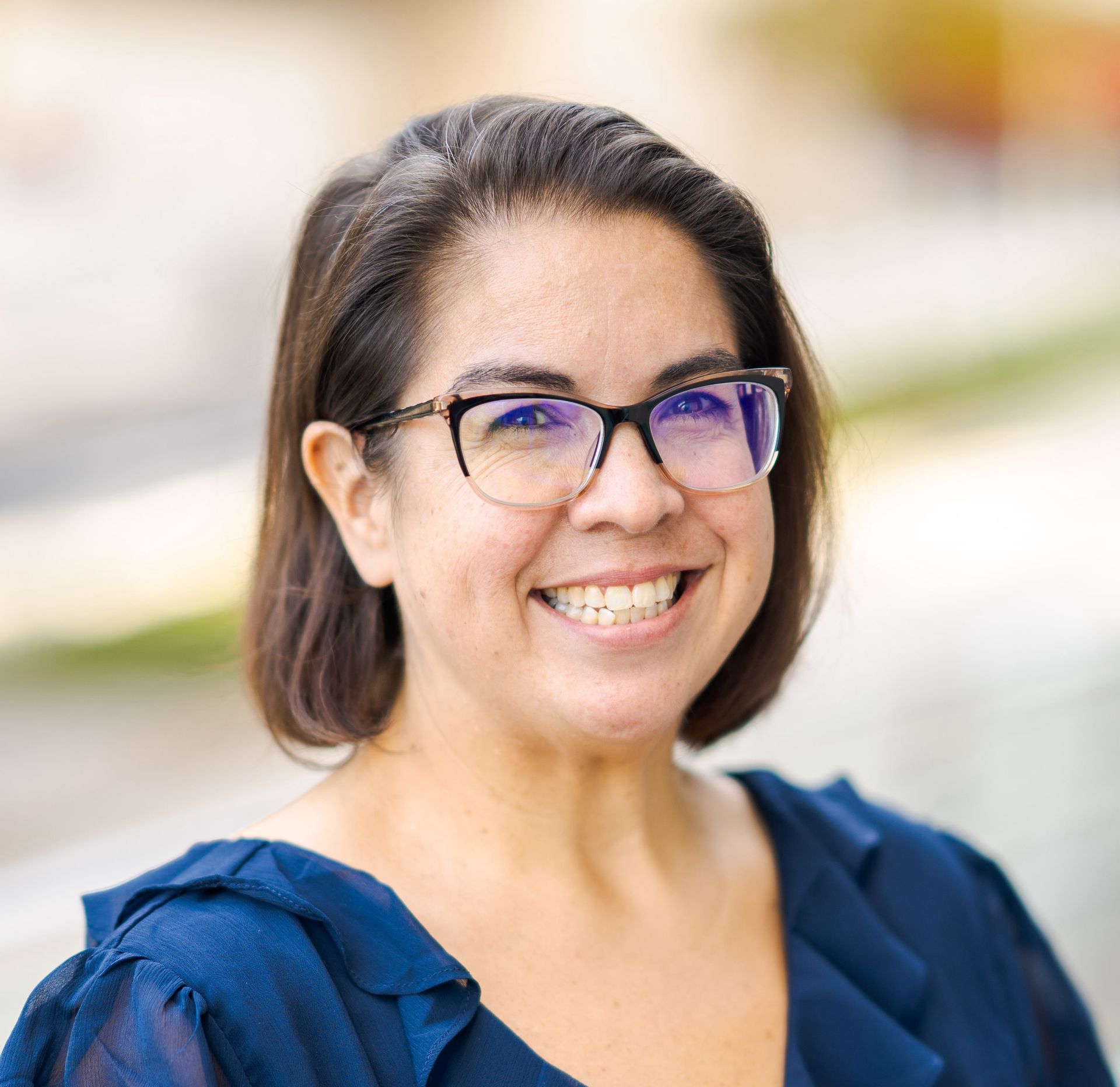

Sonny Mendoza, IT Transformation Manager,
Open Dealer Exchange
Sonny works with a team to promote the Agile methodology that drives change and allows for rapid iterations, quick adjustments, and flexibility in response to the changing market landscapes. This innovative culture positions Open Dealer Exchange as a leader in the automotive finance sector.
When not at work, Sonny is an avid sports fan who enjoys watching everything from cricket to curling.
Connect with Sonny on LinkedIn.
Relearning from this episode…
Growth and Self-Discovery in Leadership
Listeners will learn about the importance of stepping out of their comfort zones to foster personal growth. Kasey's journey from an introverted "wallflower" to a more assertive leader showcases how investing in personal development can lead to significant transformations in leadership style and effectiveness.
Embracing Empathy and People-Centric Approaches
The episode highlights the shift from problem-solving to empathy, as experienced by Sonny Mendoza. This insight emphasizes the value of understanding and addressing team members' needs and perspectives, rather than solely focusing on tasks and problems.
Cohort Learning and Its Benefits
The podcast sheds light on the unique advantages of cohort-based learning programs in leadership development. Kasey and Sonny's experiences reveal how such settings foster a sense of camaraderie, accountability, and mutual growth among participants, offering a richer and more impactful learning experience compared to traditional methods.
Explore:
Related Episodes
24: The Power of Community
Community is so much more than getting together with friends and family. Through the pandemic, we relied on community to stay connected in a world that required us to be physically separated. As the world begins to reopen community might inspire the next phase of your work or life journey. Guest David Siegel, CEO of Meetup, joins Pete to talk about how leaders can improve themselves by leveraging the power of community.
16: Exploring Identity in The Workplace
Pete is joined by Wendy Ryan, a CEO, author and trauma survivor exploring identity in the workplace and the leader’s role not only to acknowledge it, but to actively lift others up. Wendy Ryan is the CEO of Kadabara, author of Learn Lead Lift, and advocate for expanding diversity, equity, inclusion and accessibility at work. Together they explore identity in the workplace, how culture and trauma impacts identity, and the role leaders play in creating space for employees to bring their whole selves to the workplace.
Recent Episodes
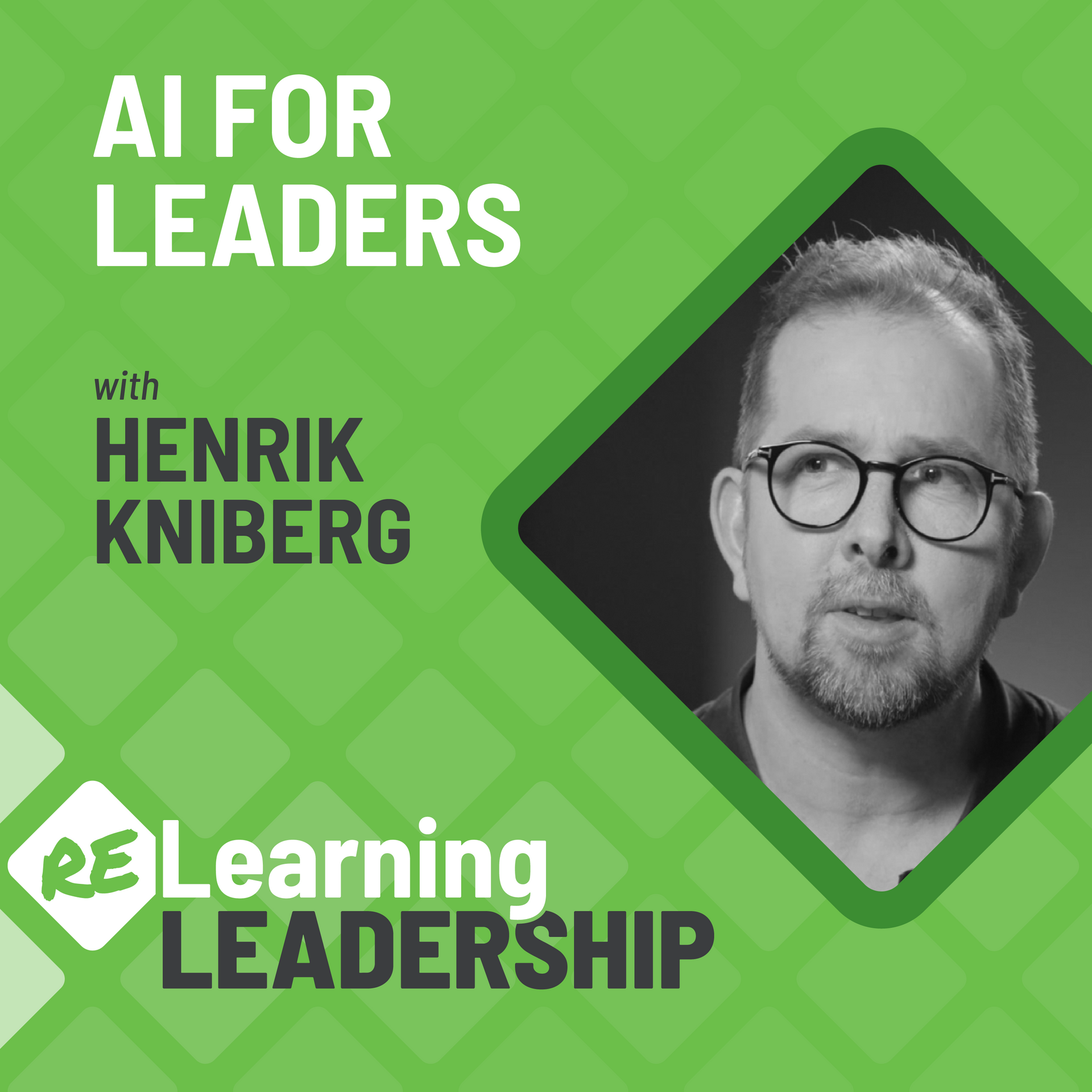
Episode Transcript
Pete Behrens:
What is the value in investing in your own leadership development?
Welcome to another episode of (Re)Learning Leadership, where we explore a specific leadership challenge and break it down to help improve your leadership, your organization, and, just possibly, your personal life. I’m Pete Behrens, and in this conversation, I am joined by Kasey Rivas and Sonny Mendoza, two leaders who recently completed a nine-month journey to improve their own leadership. This is a guided cohort-based program that meets weekly to learn, practice, and share. Kasey Rivas is the Associate Director of Strategic Partnerships with March of Dimes. Sonny Mendoza is an IT Transformation Manager with Open Dealer Exchange. And together, they shared their stories about investing in themselves as leaders. Enjoy the conversation.
Kasey and Sonny—it sounds like a hippie band from the 70s! I just want to say that! It's a pleasure to have you on the show.
Kasey Rivas:
Well, thank you for having me!
Sonny Mendoza:
Yes, yes. It's a pleasure to be here.
Pete Behrens:
Both of you have been part of a deeper program. And maybe, Kasey, I’ll start with you. What led to a decision to go into this, maybe, deeper exploration of your own leadership?
Kasey Rivas:
Yeah. I—when I first started looking into potential leadership programs, I was getting into a new position at my job. And it was a new leadership position. I really wanted to look at what I could do to grow at—not just as a leader, but also as a leader in the public health space. And Agile came up as an option. A little bit out of the box from what we would normally do in public health. But it seemed to check all the boxes I was looking for, as far as, you know, that growth mindset, catalyst mindset. Like, trying to grow beyond just being a directive leader or an assertive leader, but taking into account all the different aspects of being a leader and really embracing your team and all the different qualities they have. So, that's really why I started in this process. And after taking the initial basic, kind of, Agile courses, as I was doing that, I was, like, “I want to continue this journey!” And that's why I ended up with this advanced, kind of, Agile leadership training.
Pete Behrens:
Awesome, yeah. And, Sonny, anything to add to that? What led to your decision?
Sonny Mendoza:
Yeah, very similar to Kasey, but the only thing I would add is that—just this desire to help others as well. And knowing that, in order for me to be helpful to others, I needed to continue to learn myself and bring new thoughts and new ideas and new aspects to everything as well.
Pete Behrens:
Yeah, yeah. Now, Kasey, you mentioned Agile, you know, and a lot of times people ask us, kind of, what that is. We’re the Agile Leadership Journey, and—but we don't really teach Agile. I'm curious how that showed up to you, in terms of what Agile meant to you in this way.
Kasey Rivas:
In this, you know, journey that I took with you all, it really shows up in each little aspect, because you're always considering the different ways that people interact, the way that they communicate, and the way that they, you know, do their job. And you're embracing those little differences and finding ways that you can get, kind of, the best out of everyone on your team and do it in a collaborative way and move work forward. And I think that's where—like, it's not, like, that Agile. Like, all of the definitions of Agile that you're, like, learning about. But you're learning about how you can take that same mindset into this leadership position and really embracing that with your team that you're working with. And it's just interesting, because you don't think about it as you're doing it, but after the fact, looking back, you're like, “Wait! That all, like, fit into this Agile definition, but in a different way of looking at it.” Like, you're not just talking about, you know, each little definition of Agile, if that makes sense.
Pete Behrens:
Yeah, yeah. And I know you both work in very different organizations, right? A little more health versus the automobile industry right? Nonprofit, for-profit. And, Sonny, I know you're much more in, kind of, that realm of traditional—I'd say traditional—Agile transformation scope. So, I imagine the Agile word kind of fits quite a bit into the lexicon of what you're already doing?
Sonny Mendoza:
Yes. Yeah, absolutely. And it really helps to empower others. And I think that was the one piece that really kind of stuck with me personally and I think really helps out—is the fact that the underlying concept of—we are a group of individuals. We are not just widgets that perform work. And I think that is what's going to draw me a lot closer to Agile, because it's that focus on the individuals, focus on the people themselves. And so that you can, kind of, begin to collaborate a lot better. You can communicate a lot better because you're concentrating on the individual, not the end result, or not the thing that's being produced.
Pete Behrens:
Let's talk, maybe, just a little bit about the discoveries. I mean, one of the keys that I think we try to do for leaders is maybe open up a couple new doors and windows in your own leadership. And I'm curious—what were the discoveries for you, in terms of, maybe, something you didn't, maybe, expect or something—you look at it and say, “Oh, was I really doing that?” Was there anything that maybe stood out to you? Maybe start with you, Sonny, and then Kasey.
Sonny Mendoza:
Yeah. I think one of the biggest things that stood out for me was my ability—or I should say my lack of ability—to empathize in the right way. I always thought I was, you know, a very caring individual. But in—through this, you know, leadership training, I realized that oftentimes I would jump into a problem-solver kind of mode, where I would immediately be like, “Okay, you're bringing me a problem.” And I would attack the problem. And, “Okay, let's fix this!”, when there was an opportunity there to meet that individual and kind of empathize. And say, “Okay, well, how is this impacting your day-to-day? How is this impacting your ability to show up for work and do things?” And so, that was a big, I guess, idea or change that I didn't really focus on before, that I'm trying to focus a lot more on now.
Pete Behrens:
Yeah. Just that subtle shift of focusing on the problem, versus the person in the problem, in some ways, which connects to empathy. Kasey, you were chuckling there!
Kasey Rivas:
I mean, I just think everything Sonny just said is very in line with my, kind of, journey, too. But also, this process of learning really made me think and also empowered me to believe that I could do more than where I was still. Like I'm in this small leadership role. I started to believe, like, I can continue my journey. I can continue being a leader, whether it's in my organization or elsewhere, you know, at home. And I started, you know, automatically, kind of, doing these things in practice without thinking about it. And I think that's, like, one of the biggest wins for me in this process—was just that I was able to empower myself in this journey and know that I can learn beyond just being a directive leader or, like, being a problem-solver. Like, I kind of was in that same—or, you know, or being a perfectionist. I can embrace all of these things, and they can all be a part of my leadership journey. And I can also recognize that other people have all these different aspects and embrace those as well.
Pete Behrens:
One of the things—I think it's frustrating—is, you know, you get these new insights in yourself. You start seeing leadership differently, and then all of a sudden, you start to see other leaders differently. And I'm curious if you feel some frustration, or you see some things now in other leaders. Where it's like, oh, man, that's a mistake or a missed opportunity! Or, you know—how are you handling that? Are you seeing that, and how are you handling it?
Kasey Rivas:
I have definitely recognized this in my own organization, amongst leaders. A lot of leaders that I work with, a lot of the different—whether it's at the executive-level or, you know, mid-level or down, a lot of the leaders have just, kind of, gotten there by happenstance or, like, over time. And they haven't gone through these different trainings, like this training, right? And so, I am recognizing, like, “Wait! That person would really, really benefit from, you know, this process, this journey!” Because it—you don't think, like, you think, “I'm a manager. I have all the pieces I need.” But you only know what you know. And so, I am recognizing that as I'm, like, meeting with different people, I'm like, “This person would really benefit from this, you know, leadership training!” Because it is an amazing process, and it's a journey, and you really learn about yourself, as well as others, in that process.
Pete Behrens:
Yeah. Interesting and frustrating at the same time. Sonny, any thoughts on that?
Sonny Mendoza:
Yeah. And the only thing I would add to that is—it also allowed me to pay attention a little bit more to the impact to the other people in the team. So, when I see something, you know, a leader do something like that, taking a quick scan of the room and seeing everyone else's, you know, nonverbals. It's been eye-opening to be able to recognize that there is a direct impact to some of those items that—or some of those decisions that people are making or some of the words that they're using. Seeing that direct nonverbal impact by others—that's kind of what I'm starting to pick up on a lot more. And just trying to understand, “Okay, how can I assist with that? How can I correct that? How can I prevent that from happening again so that these individuals can remain engaged in this project or in this opportunity?”
Kasey Rivas:
I love that you said that, Sonny, because I just—I found that I've been trying to find ways that I can demonstrate or model, like, what I've learned with other leaders in those situations. Where I'm seeing—like, how are other people reacting? Is there a chance for me to, kind of, step in and model what should be done here? So anyway, I just, sorry I jumped in there! I just wanted to say that I found myself doing that too, kind of, watching, and then also finding ways that I can potentially step in or model. Like, you know, maybe they'll catch onto—like, this is how we should be doing it. Because people are responding to this, you know, this model behavior.
Pete Behrens:
Yeah. It's interesting how much awareness plays a part. Like, you've become more aware, and all of the sudden, you see things, right? Which gives you access to scan the room, gives you access to actually assess in real time. And what's cool about that—it's a real learning process, even if you're not doing it yourself. You can learn how other leaders are doing it just by seeing and observing that. It's interesting.
You know, both of you went through what we call a cohort program—right?—where it's not just one-on-one coaching, not just a class. It's really, kind of, that little bit more intimate group of leaders that are on a journey together, like a hiking group or something. Describe that a little bit for me. What was that like? Were you surprised by it? Was it, you know—it's a little different than a lot of leaders get when they're thinking about leadership education in a classroom, one-on-one coaching, which are probably the typical leadership development models. So, I'm curious for you guys to maybe share that experience.
Sonny Mendoza:
Yeah. For me, it was kind of comforting being around, like-minded individuals, you know? [Laughs] It's just, like, oh my gosh! They're going through the same troubles that I'm going through! And, yeah, I am not going crazy. I am, you know, thinking the right way. And so, that was—there was some comfort in that, but there was also some accountability there as well, which is kind of unique with the cohort. And it was, you know, meeting on a week-by-week basis. You know, we're going to discuss something; we're going to learn something; we're going to commit to practice. And then, you know, coming back the next week, and now you have to face your cohort and say, “Okay, did I practice? Did I do the thing? Did I pass? Did I fail?” And, you know, it's kind of almost like a little weekly retrospective that you don't really get with some of the other classes when it's just, kind of, a two-day session, and then you move on. So, that was one of the parts of it that really worked out the best for me.
Kasey Rivas:
Yeah. I mean, I would say exactly what you said, Sonny. Adding to that, I will say I was nervous, a little bit scared, jumping into this type of learning. I tend to be a little bit of an introvert, and so I was like, “Man, what is this going to look like, to be talking to strangers about my leadership skills?” And my, you know, weekly—but we—there was a warmth to it, and there was this camaraderie or kinship that we built over the weeks and over the, you know, the two iterations of the cohort. And with that, I learned so much, because I was free to, like, be open and share and be vulnerable. And I don't think I would have had that same experience in a larger classroom setting or, you know, setting where you're just sitting there listening to somebody teach you, right? So, I think it's just incredibly valuable. And the accountability is—you know, if you're somebody who likes to, like, show up for people, or you're, like—don't want to fail people, it's amazing. Because the accountability. You're really showing up every week. And you're doing your work. And it makes you remember during the week, as you're having your team meetings and your projects that you're working on. It reminds you, like, “Oh, I need to be practicing, so then, when I go meet with my cohort at the end of the week, I can report back on what I did!” So, yeah, I think it's just a—such a more rich experience than you would get in just a typical classroom.
Pete Behrens:
Yeah. Yeah, it's interesting how that, almost, I don't know the other person—makes you more accountable. Sometimes we do these cohorts inside of a company, and the leaders already know each other, and so sometimes there's this weird element of, “Well, I don't have to show up this time.” Or they, you know—there's these excuses. And for some reason, these cohorts that, you know—leaders coming from different companies. That accountability feels stronger. And I'm not sure what the dynamics of that is, or what the human side of that is. But it's definitely an interesting one.
Kasey Rivas:
Yeah. I mean, I was sometimes even thinking, like, I have to show up so I can find out how so-and-so did on their, like, goal for the week, right? Or what they really wanted to focus on and work on. Whereas, definitely if it was my own work team, I probably would have found, potentially, an excuse to not show up. Like, oh, I have another meeting, or I need—I have a lot of work to do. I can't show up. So, definitely that stranger accountability. Whatever that is, that comes into play with this.
Sonny Mendoza:
Oh, absolutely. Yeah, I would agree.
Pete Behrens:
You know, it's a bit of—I tell leaders when they do a program like this, or even a classroom setting, like, it's okay to be selfish, to some degree. Like, pull away from your work and—you know, investing in yourself is a bit selfish, right? It is a bit—you know, you're spending time on yourself, but hopefully for, you know, a better purpose, right? Hopefully for improvement in some dimension in the organization. Was there ever a moment—you know, Kasey, you've reminded me—was there ever a moment of, “Oh, crap, why did I do this?” Or, you know, “What did I get myself into here?” [Laughs] Did you—did either of you ever experience that, like, regret, I guess, through the program? And how'd you get through it?
Kasey Rivas:
The moment all of the calendar invites came through for the weekly meetings, I was like, “What did I do?” [Laughs] But in the end, like, what I gained is so much more than the time that was, like, that was invested. It was so well worth it. And I gained so much. I'm a different person than I was when I started for sure, which—I think that might be interesting to hear. But I am! I'm—and I think it—part of it is around the journey and learning about leadership in general. But, also, it's about being vulnerable in that space with strangers and that cohort. And you do change a little bit, because you're learning from them, and you're growing with them into something more and something different.
Sonny Mendoza:
Yeah, I would agree, Kasey. And I—the only thing I would add to that would be that moment that I discovered something in myself that I didn't know was there, or didn't really, kind of—I was like, “Oh no, I—why am I here? This is not a good feeling, because I'm, like, exposing, you know, or I'm learning something that, wow, I thought I was good at.” Or “I thought I understood this!” And so, there's a little bit of that hesitation of, “Oh, this might turn out really, really bad for me, so why am I here?” But, yeah, sticking with it and realizing that, yes, there is learning that needs to happen. And really, the rest of the cohort kind of being there, lifting you up, exposing some of their vulnerabilities as well just, kind of, made you feel like, “Okay, nobody's perfect. We're all learning here. It's okay!”
Kasey Rivas:
Growth hurts. I had to remind myself that a couple times. I'm like, my son gets growing pains, right? Like, growth isn't easy, and growth isn't painless, right? So definitely there were those, kind of, moments of, like, “Ugh, there's something in me I need to change.” And that doesn't always feel good, but I had to remind myself growth is not easy!
Pete Behrens:
No. I remind leaders, sometimes, practicing like this—it’s like going back to middle school. It's like, you're learning this new skill that's not comfortable yet, and so it comes out very awkward. And just like a middle schooler trying to learn to socialize, right? [Laughs] These programs are not cheap, right? They're not inexpensive. And I'm curious—was it difficult to get funding for this? And if it's not too difficult to ask or answer, you know, what was that like to actually budget for this and get this part of your—to put this into your plan?
Kasey Rivas:
So, coming from a nonprofit, as you can imagine, this wasn't in our budget. I actually got a grant for leadership training, and this was what I chose to use that grant for, which—I'm really happy that I did in the end. But definitely, if you're working in, kind of, this nonprofit space, it's important to invest in your professional development. It's important to invest in your leaders. So, I think the more organizations that can find, you know, that budget to do stuff like this with your leaders—it's super important to do. But it's not easy, definitely, like, in this world where, you know, funds are not easy to come by. It's not easy, but it's definitely worth the investment.
Sonny Mendoza:
Yeah, absolutely. And for me, it was—thankfully, we had a couple of very small wins early on with this Agile transformation. And so we were able to, kind of, improve some of the ways that we were doing things. And we were able to increase efficiencies. And so, I just kind of leveraged that to say we could be even better, right? And there are additional opportunities out there for us to improve, but we have to go out and learn them. We have to discover them. We have to be a part of that community. So for me, personally, it was just kind of being able to have those small wins to, kind of, lean on to show that we're at the start of this journey. And we could go a lot farther if we continue, and we're dedicated to it.
Pete Behrens:
Well, I'm glad to hear that this wasn't punishment for both of you! [Laughs] We more often get the desire to change side versus the I have to change side. So I appreciate your effort to get the funding for that. One of the things that I find to be the most valuable is when somebody else notices a change in us. And I'm curious if either of you have had that experience from things you've been working on, where you were recognized or somehow it stood out to somebody that something's different or not the same as it usually is. And I’m curious if there's a story there to share.
Kasey Rivas:
So, I actually—recently, my manager was out on leave for some time, and I was stepping into, kind of, some of the leadership of the projects that she had been overseeing to help move things along. And the feedback I got from others on the team, as well as her manager, was all positive. It was like, “Wow! Like, you've done a really great job of not just moving this work forward but bringing us all together to do this.” And, you know, kind of fit all the pieces. And recognizing who's good at what and getting that, you know, getting the work out of everybody from different things. And so, feedback was a part of my goal in my journey—was, you know, inviting feedback. And I've tried to do that, and I think I've gotten it, and I've gotten that positive feedback of seeing that kind of change of—Kasey was kind of a little bit of a wallflower, you know? [Laughs] And kind of stepping out of that introverted wallflower and having a voice and kind of stepping into a leadership role and getting really good feedback from others around me. So, I've definitely experienced that very recently.
Pete Behrens:
So now we have the Kasey, the lion, or—what's your image besides the wallflower? [Laughs]
Kasey Rivas:
I don't think we're quite at lion stage, but we're getting there! Like, I'm somewhere between wallflower and lion, somewhere on that continuum.
Pete Behrens:
Awesome, awesome. We're going to have to build that, the metric there, and choose your animal! [Laughs] I like it. Sonny, how about for you?
Sonny Mendoza:
Yeah. For me, I think probably the biggest recognition—and it’s probably the one that I'm most happy about—is with my team. And as we work together to start looking at, you know, 2024 and what we're going to do, they noticed that I'm a little bit more open and a lot less directive. I am asking a little bit more questions and not just problem solving and really kind of trying to work with them to collaborate and deliver a team objective or a team goal. And so, I think that that's probably one of the biggest changes I would say that we're seeing—is that we're having a lot more, just, very candid, very open discussions within our team. And I like that, you know? I think they're starting to feel a little bit more comfortable with that.
Pete Behrens:
Yeah, yeah. That's awesome. And that's, you know, that is the goal when we think about leadership, right? It's not just your change, but how does your change impact other change, right? How does your change impact the team, the organization, the customers, the experience, you know? We call that catalyst. And that's really the key, kind of, aspect of, you know, the change agent in an organization. Maybe as just, kind of, a parting question, or what to leave some of our watchers and listeners with, is—what might you say to somebody who, you know, really hasn't thought, or maybe has thought about it, but, you know, is not really sure what to do as a next step in in their leadership development. But, any thoughts or comments about what you might recommend to them as something they might consider? Besides just saying, “Hey, join this program!” That's very selfish. But something, maybe, a little bit more, you know, nuanced. Or, you know—yeah, I'll leave it to you!
Sonny Mendoza:
Yeah. Where my mind goes is—don't be afraid to admit that you don't know something. And then take that as a challenge to go find out. And—regardless if it's Agile or anything else. But it's just—I think that's one of the most difficult pieces to, as a leader, to admit. It’s like, “Oh, I don't know that, and I want to go learn it!” And so, that's kind of where I would, you know, leave it. And hopefully, others can feed off of that.
Kasey Rivas:
You said that so well. How do I follow that?
Pete Behrens:
How do you follow that one?
Kasey Rivas:
I know! I mean, I would probably say, you know, just remembering that, as people, we're always growing. And so, taking a step to be a little bit uncomfortable in your growth and finding out what that is, whether it's investing in yourself, in this leadership journey, or similar. It's something that we all need to do as we continue on our path. And that investing in yourself, in leaders, in being a better leader, is not just for somebody—like I had previously thought, like, just somebody who's already a manager, somebody who's, you know, in the software world. Like, that's where I—my mind had went when I thought about Agile and when I thought about, you know, this leadership journey. And it really is a space for everybody. No matter where you're at, on, kind of, your career path, there's an opportunity to invest in yourself and learn more and grow and, you know, grow in your career path. But I think Sonny said it perfectly! [Laughs]
Pete Behrens:
Ditto! You know, but both of you, I think, describe, perfectly capture, you know, this catalyst leader, right? The courage to make a decision or to take a step when you don't have all that information or when it's scary or, you know, you don't know the outcome. And then the second thing is being comfortable in that mess, right? Because change and complexity and speed and, you know, our economy and everything that's going on right now in the world, right? It's messy. And how, as a leader, do you start getting comfortable in that uncomfort? And how do you start making decisions without all that data? So, you know, to us and the way we apply Agile leadership and catalyst leadership—that's core. And I think you guys both describe that incredibly well. So, might look at hiring you as salespeople. So, thank you! [Laughs]
Sonny Mendoza:
Thanks!
Kasey Rivas:
I might have to move more towards the lion. [Laughs]
Pete Behrens:
So if you don't form a 70s band, we might have a job offer for you as ALJ salespeople. Well, thank you both for sharing just a little bit of your experience through these programs! And just—I just want to say thank you for taking the time and the money it took and the energy it took to invest in yourself. So I just want to say thank you for that.
Kasey Rivas:
Well, thank you!
Sonny Mendoza:
Yeah, absolutely, Pete. Thank you very much! The program has been absolutely wonderful. So well worth it.
Kasey Rivas:
Definitely.
Pete Behrens:
(Re)Learning Leadership is the official podcast of the Agile Leadership Journey. Together, we build better leaders. It’s hosted by me, Pete Behrens, with contributions from our global Guide community. It’s produced by Ryan Dugan. With music by Joy Zimmerman. If you enjoyed this episode, please subscribe, leave us a review, or share a comment. And visit our website,
agileleadershipjourney.com/podcast, for guest profiles, episode references, transcripts, and to explore more about your own leadership journey.

